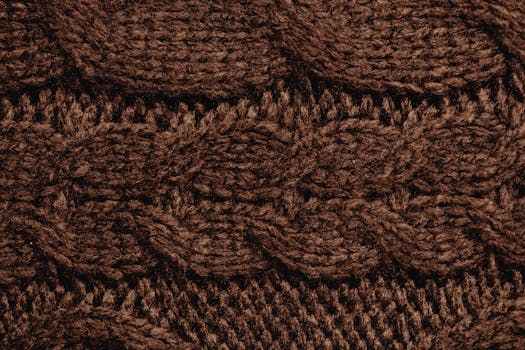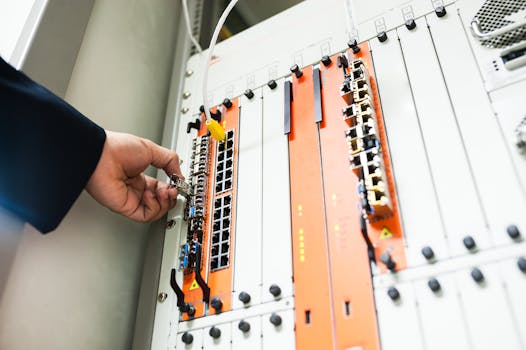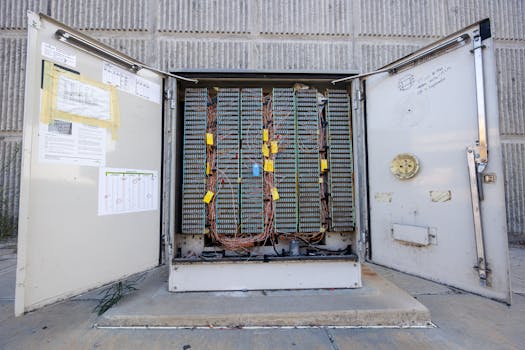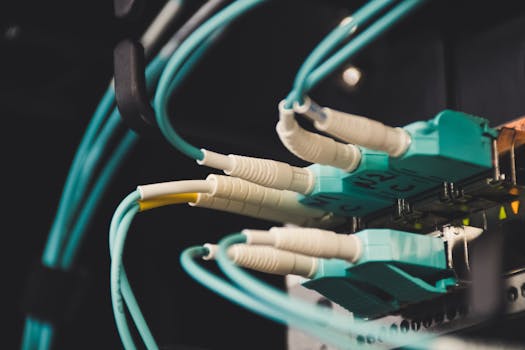
Fiber Optics vs Traditional Copper Cables: A Comparative Analysis
Fiber optics vs traditional copper cables is a debate that has been ongoing for years, with each side having its own set of advantages and disadvantages. In this article, we will delve into the world of fiber optics and traditional copper cables, exploring their differences, applications, and the benefits they offer. Fiber Optics vs Traditional Copper Cables is a crucial consideration for any organization looking to set up a network infrastructure.
Introduction to Fiber Optics and Traditional Copper Cables

Fiber optics and traditional copper cables are two different types of transmission media used for sending data as light signals over long distances. Fiber Optics use thin glass or plastic fibers to transmit data, while traditional copper cables use copper wires to transmit data. The main difference between the two is the medium used to transmit data, with fiber optics using light signals and traditional copper cables using electrical signals.
Fiber optics were first introduced in the 1970s, and since then, they have become a popular choice for high-speed data transmission. They offer several advantages over traditional copper cables, including higher bandwidth, faster data transfer rates, and longer distances without signal degradation. Traditional copper cables, on the other hand, have been in use for decades and are widely used for telephone and internet connectivity.
Comparison of Fiber Optics and Traditional Copper Cables

When it comes to comparing fiber optics and traditional copper cables, there are several factors to consider. Some of the key differences include bandwidth, data transfer rate, distance, interference, and cost. Fiber optics offer higher bandwidth and faster data transfer rates, making them ideal for high-speed applications such as video streaming and online gaming. Traditional copper cables, on the other hand, are more suitable for lower-speed applications such as telephone and internet connectivity.
In terms of distance, fiber optics can transmit data over longer distances without signal degradation, making them ideal for long-haul networks. Traditional copper cables, on the other hand, are limited to shorter distances and require repeaters to boost the signal. Fiber optics are also less prone to interference, making them a more reliable choice for critical applications.
However, traditional copper cables have the advantage of being less expensive to install and maintain. They are also widely available and can be easily integrated into existing networks. Fiber optics, on the other hand, require specialized equipment and skilled technicians to install and maintain, making them more expensive.
Applications of Fiber Optics and Traditional Copper Cables

Fiber optics and traditional copper cables have different applications, depending on the specific requirements of the network. Fiber optics are commonly used in high-speed networks, such as data centers, cloud computing, and telecommunication networks. They are also used in medical imaging, industrial control systems, and transportation systems.
Traditional copper cables, on the other hand, are commonly used in telephone networks, internet connectivity, and local area networks. They are also used in home networks, small office networks, and industrial control systems.
Conclusion

In conclusion, Fiber Optics vs Traditional Copper Cables is a debate that depends on the specific requirements of the network. Fiber optics offer higher bandwidth, faster data transfer rates, and longer distances without signal degradation, making them ideal for high-speed applications. Traditional copper cables, on the other hand, are more suitable for lower-speed applications and are less expensive to install and maintain. Ultimately, the choice between fiber optics and traditional copper cables depends on the specific needs of the organization and the type of network being set up.



